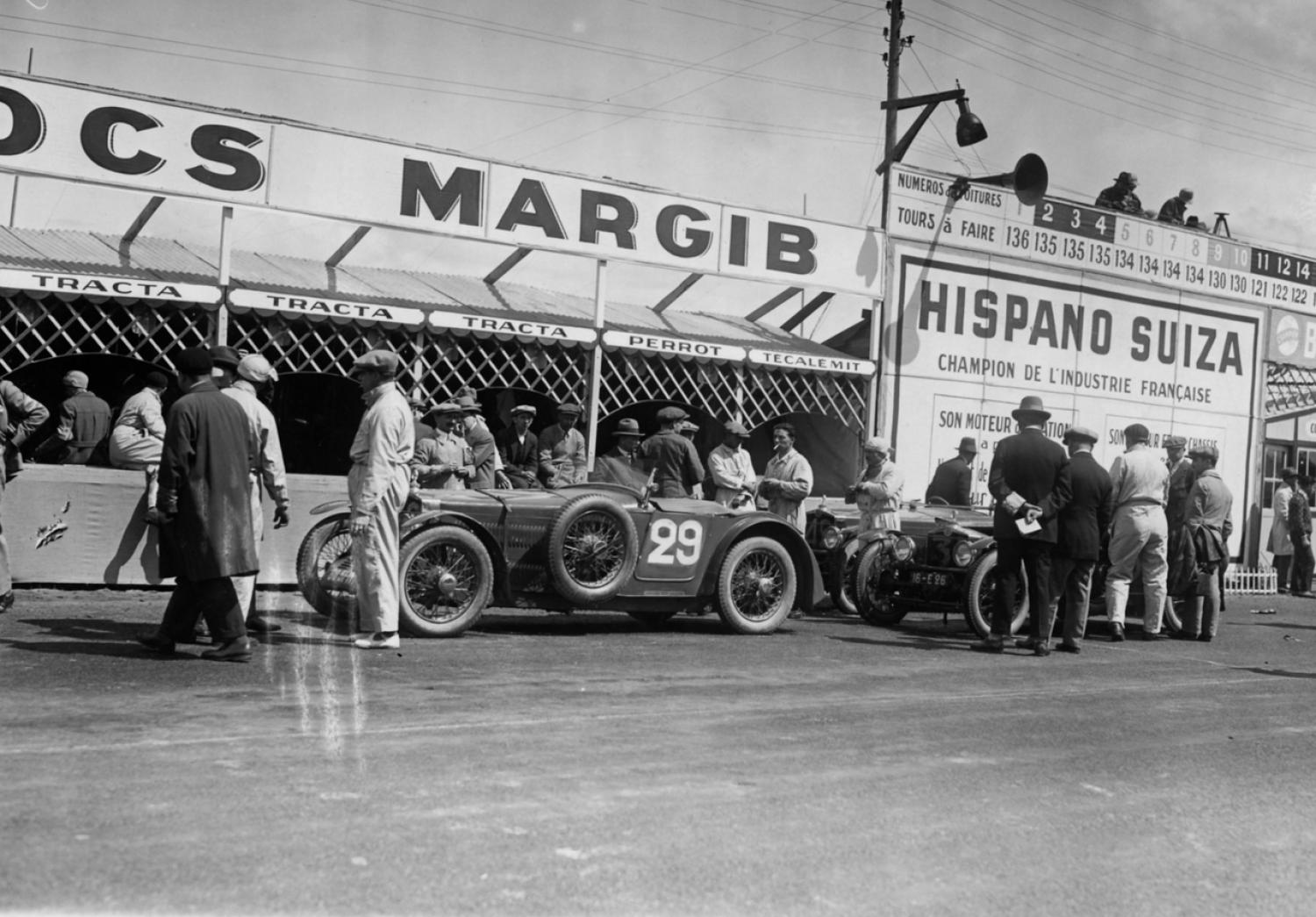24 HOURS CENTENARY – PERPETUAL INNOVATION ⎮ The founding fathers of the 24 Hours of Le Mans envisioned the race as a real-life test bed for production vehicles, spawning countless inventions. Two in particular had a global impact on road safety once applied to everyday vehicles. The earliest was the introduction of front-wheel drive technology, which the Tracta Gephi showed to be especially effective at Le Mans in the late 1920s.
In 1953, a Jaguar C-Type swept to victory in the 24 Hours of Le Mans. The car was fitted with disc brakes which subsequently became an essential safety feature on even the most basic models. A quarter of a century before the Jaguar’s ground-breaking win, however, Frenchmen Pierre Fenaille and Jean-Albert Grégoire introduced front-wheel drive technology at the 1927 race. This invention has undoubtedly saved millions of lives over the years by improving roadholding and giving motorists better control in almost every situation.
1927-1930: five Top Ten places for the Tracta Gephi
The Tracta broke with traditional automotive architecture and its rear-wheel drive systems when it introduced the constant-velocity – or homokinetic – joint. Until then, power was transmitted from the engine to the wheels via a double cardan joint, a system that could be unreliable and subject to vibrations and wear. The revolutionary technology was first developed by Fenaille, but Grégoire fine-tuned his patent to obtain perfect synchronisation of the two drive shafts.. The ingenious pair joined forces to apply the technology to the race track and built their first car, the Tracta ‘GePhi’ (short for Grégoire and Fenaille).
Fenaille agreed to fund the project on the condition that the car explored new avenues. The 24 Hours of Le Mans was the ideal opportunity to put it to the test. Tracta cars competed in the race four years running with convincing results, finishing seventh in 1927, 12th in 1928, ninth and 10th in 1929, and eighth and ninth in 1930. Grégoire had also previously participated in a few hill climbs with great success.
Today, 90% of cars in France are equipped with front-wheel drive, which is largely down to Grégoire and Fenaille. In 1934, André Citroën, another Polytechnique graduate, launched his own game-changer – the much-lauded ‘Traction’ renowned for its peerless roadholding which probably goes a long way to explaining its exceptional lifespan. The advent of front-wheel drive technology had a profound effect on car design as they could be made lower, allowing the driver to touch the ground from his or her seat. A substantial amount of space was gained on the floor pan as the unsightly and uncomfortable transmission tunnel was no longer needed.
An attraction for the 24 Hours Museum
The Tracta that is now part of the 24 Hours Museum collection was carefully conserved in its original condition for 59 years, complete with its SCAP engine fitted in an inverted position to couple it with the front axle. The car was first registered under number 16 E 26 but competed in the 1929 Le Mans 24 Hours under number 3207 W 1. It was then registered under 4991 RS 4 on 15 February 1950. Finally, in 1958, it was assigned no. 2093 GY 75, the number it still bears today. For a while, the Tracta was abandoned under a pile of leaves in the streets of Paris when its then owner ran out of money to pay for garaging. The car was eventually acquired by Jacques Liscourt. Major collectors, including Serge Pozzoli and even Jean Albert Grégoire, the car’s creator, tried to buy it but Liscourt kept hold of it as the pride of his collection.
This Tracta has earned its place among the trailblazers of international automotive history. It was acquired by the 24 Hours of Le Mans museum in 2017, at an auction that fittingly coincided with the 24 Hours of Le Mans podium ceremony. At the first glimpse of the chequered flag, Frédéric Lénart, ACO Managing Director at the time, and current 24 Hours Museum Director, Fabrice Bourrigaud, pulled out their mobile phones, keen to follow the sale at Fontainebleau. Their enthusiasm paid off and the Tracta is now back at Le Mans for good.
PHOTOS: LE MANS (SARTHE, FRANCE), CIRCUIT DES 24 HEURES, 1927–1930 24 HOURS OF LE MANS – FROM TOP TO BOTTOM (© ACO archives) – Five snapshots of the Tracta Gephi revolution at the 24 Hours of Le Mans: excitement in the pit lane in 1928; the #20 Tracta Gephi driven by Lucien Lemesle and Jean-Albert Grégoire (the G of Gephi) finished seventh in 1927; a year later, three examples of the Tracta Gephi completed the race, placing 12th (#29, Maurice Benoist/Louis Balart), 16th (#31, Roger Bourcier/Hector Vasena) and 17th (#42, Jean-Albert Grégoire/Fernand Vallon); in 1929, the Tracta Gephi returned to the Top Ten thanks to the ninth-placed Louis Balart/Louis Debeugny (pictured here in the #26 car), and Jean-Albert Grégoire/Fernand Vallon (10th); in 1930, the eighth and ninth places respectively achieved by the #27 and #26 cars reward once again the innovative spirit shown by Jean-Albert Grégoire and Pierre Fenaille.





